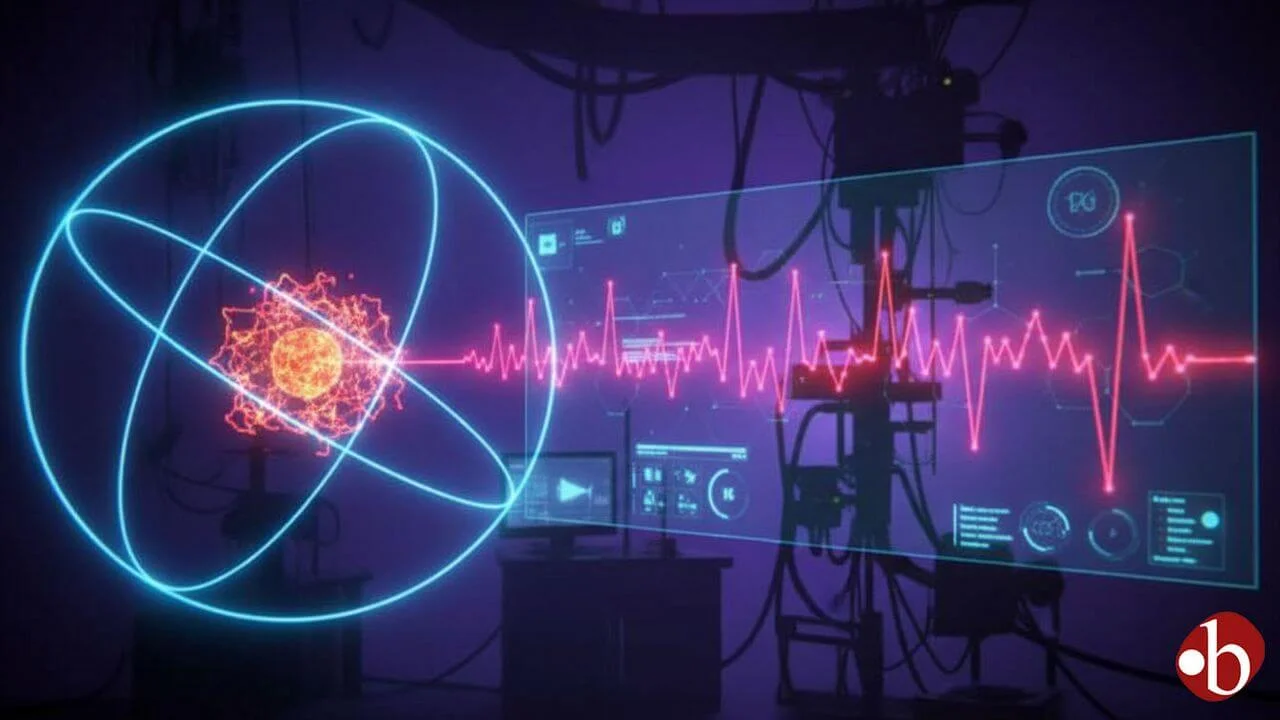Quantum Spin Flips Seen in Real Time
Scientists have captured the real-time flipping of a single atom’s nucleus, opening new possibilities for quantum sensing and future computing.

Researchers at Delft University of Technology have made a major breakthrough in quantum science by directly observing the nuclear spin of a single atom flipping between two states in real time. This achievement, reported in Nature Communications, was made possible with a scanning tunneling microscope (STM). The discovery offers fresh opportunities for controlling and measuring atomic-scale magnetism, which is key for quantum sensing and information processing.
How the Experiment Worked
At the core of this work is the STM, an instrument with an ultra-sharp tip capable of detecting individual atoms on a surface. Normally, STMs can sense electron spins, but nuclear spins are harder to access because their magnetic signals are much weaker. The Delft team overcame this by using hyperfine interactions—tiny quantum couplings between the atom’s nucleus and its surrounding electrons. By carefully monitoring changes in the tunneling current, they could infer when the nuclear spin flipped.
Why Nuclear Spins Matter
Electron spins change in billionths of a second, making them unstable for long-term observation. Nuclear spins, however, are much steadier. In this study, the nuclear spin stayed in one state for several seconds before flipping, which is an eternity compared with electron spins. This allowed the team to watch the process directly on their computer screens, effectively witnessing quantum behavior in action.
The Breakthrough of Single-Shot Readout
A key innovation was the ability to measure the nuclear spin state in a single attempt rather than averaging results over many trials. Past approaches often disturbed the spin or produced signals too weak to interpret. By refining the STM setup and leveraging hyperfine interactions, the researchers could clearly detect when the nuclear spin switched states. This precision is vital for using nuclear spins as qubits or quantum sensors.
Implications for Quantum Technology
Nuclear spins, thanks to their stability, are excellent candidates for quantum memory. Unlike electron spins, which lose coherence quickly, nuclear spins can preserve information long enough for practical use in quantum devices. Observing them in real time with STM technology could transform the way we design atomic-scale sensors, quantum computers, and advanced materials.
These nuclear spins may also act as ultra-sensitive detectors for tiny magnetic or electric fields, chemical surroundings, or even fundamental physics phenomena like dark matter. Their potential extends across materials science, condensed matter physics, and beyond.
Overcoming Technical Challenges
Reaching this milestone was not easy. The STM tip had to be exceptionally stable to pick up the faint current changes caused by spin flips without disrupting them. The team used rapid measurement protocols and advanced data filtering to separate genuine nuclear signals from background noise. Their success suggests that STMs could evolve into scalable quantum sensors and simulation platforms.
Looking Ahead
The ability to observe and control nuclear spins may play a central role in future quantum computing. Stable nuclear spins could be used to store information, support error correction methods, or serve as precise sensors at the atomic level. This experimental framework also provides a way to study how quantum systems maintain or lose coherence, which is critical for building reliable quantum devices.
A Step Toward Next-Generation Quantum Tools
Led by Professor Sander Otte, the Delft research team has shown that the “silent” spins of atomic nuclei can not only be observed but also controlled. Their work expands the experimental toolkit for probing quantum systems and brings the dream of atomic-scale quantum technology closer to reality.
This article has been fact checked for accuracy, with information verified against reputable sources. Learn more about us and our editorial process.
Last reviewed on .
Article history
- Latest version
- Last updated by Dayyal Dungrela, MLT, BSc, BS
- Peer reviewed by Dr. Arjun Patel, PhD
Reference(s)
- Stolte, Evert W.., et al. “Single-shot readout of the nuclear spin of an on-surface atom.” Nature Communications, vol. 16, no. 1, 21 August 2025 Nature Publishing Group UK, doi: 10.1038/s41467-025-63232-5. <https://www.nature.com/articles/s41467-025-63232-5>.
Cite this page:
- Posted by Aisha Ahmed